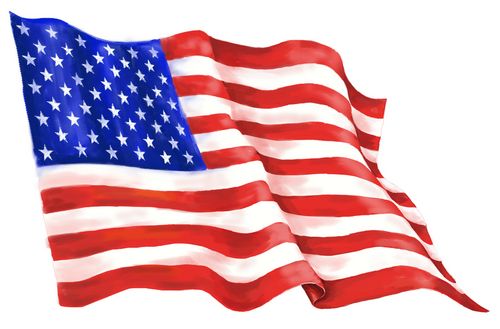Presented by Colonial Flag
CLEANING THE FLAG
From the chaos of a heated battlefield to the daily flag ceremonies of a scout troop camping high in the mountains, flags have proved to be strong and resilient in all kinds of situations, but not indestructible. Preventing damage to your flag is not always possible, but by following some simple care-taking tips, you can extend the life of your flag.
Cleaning flags. Dust, smoke, and other harmful pollutants can cause your flag to wear and age quickly. If possible, choose to fly your flag in a clean environment. When your flag becomes dirty, wash it in warm water with a mild detergent, making sure to rinse it thoroughly—leaving no residue behind that can cause discoloration. Do not store your flag until it is completely dry.
MENDING FLAGS
From the chaos of a heated battlefield to the daily flag ceremonies of a scout troop camping high in the mountains, flags have proved to be strong and resilient in all kinds of situations, but not indestructible. Preventing damage to your flag is not always possible, but by following some simple care-taking tips, you can extend the life of your flag.
Mending flags. Trimming off frayed threads is an easy way to make your flag last longer and look better. If excessive fraying occurs, using a sewing machine to re-hem a flag is a perfectly acceptable way of maintaining your flag. Flags with excessive wear and tear should be properly disposed of.
STORING FLAGS
From the chaos of a heated battlefield to the daily flag ceremonies of a scout troop camping high in the mountains, flags have proved to be strong and resilient in all kinds of situations, but not indestructible. Preventing damage to your flag is not always possible, but by following some simple care-taking tips, you can extend the life of your flag.
Storing flags. Storing your flag properly is not only respectful, but can add life to your flag. It is important that you store your flag in a dry and dust-free environment. Also, avoid storing your flag in a garage or a basement next to chemicals that could damage your flag. Storing your flag in a proper case will protect your flag and also give you an attractive way to display it.
RESPECT FOR THE U.S.A FLAG
Respecting the flag is very important. The American flag is a symbol of our nation’s strength and unity.
For over 200 years it has been an inspiration for millions of citizens and the flag deserves our respect. The flag has been a prominent icon in our national history. Many people have died to preserve our nation’s freedom and way of life. Please be careful when handling the American flag.
Many rules and regulations can come in to play when displaying the flag. We hope that some of these guide lines will help maintain the reverent respect and admiration for our country’s national symbol.
HOW TO FOLD THE FLAG.
http://www.colonialflag.com/product_images/fold_the_flag.pdf
THE U.S. FLAG IN TIMES OF MOURNING
Some have asked what to do when there is a state flag or other flag below the US flag. It is recommended that all flags other than the U.S. flag be taken off the pole and that the U.S. flag be allowed to fly alone. While flying non-U.S. flags on adjacent poles in a multiple flagpole situation is common, the strictest interpretation of the flag code suggests that all adjacent flags (i.e. state, corporate, foreign, etc.) be removed while the U.S. flag remains alone at half staff.
The United States Flag can be used to express sadness at the death of an important person or group of people. This is when the flag is flown at half-mast or half-staff.
When raising the flag to half-staff, always raise it briskly to the top of the flagpole for a moment before lowering it. When taking it down for the night, raise it to the top of the flagpole again and lower it to the bottom. When the United States flag is flown at half-staff, state flags should be removed or flown at half-staff too.
The flag should be flown at half-staff when important government officials or state governors have died, or when mourning a national tragedy. Only the President and state governors can decide when and how long the flag should be flown at half-staff. The length of time for flying the flag at half-staff depends on the office of the person held:
RED, WHITE, AND BLUE
The colors red, white, and blue did not have meanings for The Stars and Stripes when it was adopted in 1777.
However, the colors in the Great Seal did have specific meanings. Charles Thompson, Secretary of the Continental Congress, reporting to Congress on the Seal, stated:
“The colors of the pales (the vertical stripes) are those used in the flag of the United States of America; White signifies purity and innocence, Red, hardiness & valour, and Blue, the color of the Chief (the broad band above the stripes) signifies vigilance, perseverance & justice.”
Also this from a book about the flag published in 1977 by the House of Representatives…
“The star is a symbol of the heavens and the divine goal to which man has aspired from time immemorial; the stripe is symbolic of the rays of light emanating from the sun.”
HOW LONG WILL A FLAG LAST?
How long will a flag last? There is no exact answer.
The U.S. Government generally expects a nylon or cotton bunting flag to last approximately 90 days, based on daily usage from sunrise to sunset. Tests have shown that in some cases a flag flown 24 hours a day will last only 1/4 as long as one flown during day light hours only.
Sadly enough flags don’t last forever, after awhile the cloth will sooner or later succumb to the elements it is exposed too. It has been documented that reasonably good care and love for the flag can greatly prolong the life of your flag.
Things that will help prolong life of a flag:
Try to avoid flying your flag in the rain or snow.
High winds combined with water puts undue strain on the flag.
You can prevent mildew by letting your flag dry thoroughly before storing it.
The fly end will be the first to reveal wear and tear. When this begins, you may take the flag down trim off the old hem and re-hem your flag. Do this at the first sign of fraying to prevent the material from shredding.
Beware of obstacles from other nearby surfaces. (Such a trees or phone lines) This will cause a weakening of the materials.
Use the proper size of flag on your flagpole. A flag that is too large may cause the pole and flag undue stress in high winds.
Smog and atmosphere conditions will not only cause discoloration, but weaken the fabric of your flag.
Continuous day and night display will shorten the life of your flag.
More info can be found at Learn Flag Etiquette http://www.colonialflag.com/learn_category_11.php
David Rindlisbach
www.colonialflag.com
9390 S 300 W
Sandy, Utah 84070
Toll Free Phone: 1 (877) 935-3524
Phone Salt Lake City: (801) 562-0123
Fax (801) 562-1177
custom@colonialflag.com















Add comment